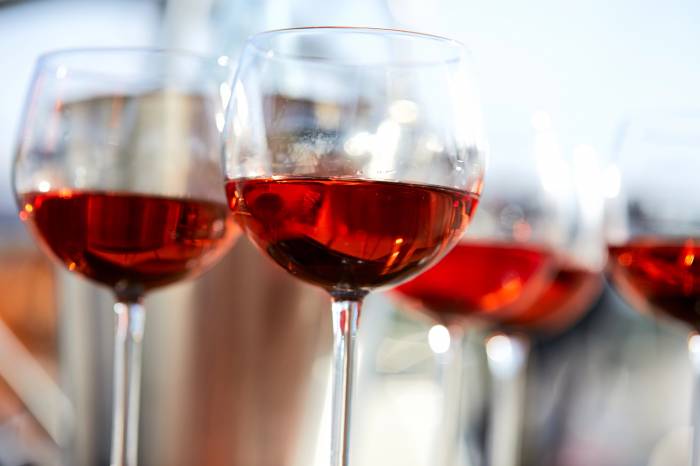Rosé Wines Defy Global Decline, Now 10% of World Wine Consumption With $2.7 Billion in Exports
2025-11-27
Italian producers innovate with new rosé categories as global demand rises and traditional wine sales falter worldwide

In recent years, rosé wine has become one of the most resilient categories in the global wine market. While overall wine consumption and international trade have declined, rosé wines continue to gain ground, taking market share from traditional red and white wines. According to the World Rosé Observatory, managed by France Agrimer in partnership with the Interprofessional Council of Provence Wines, Italy ranked fourth in global rosé consumption in 2023. Italians consumed about 1.1 million hectoliters of rosé last year, following France, Germany, and the United States.
The global rosé market recorded a total consumption of approximately 18.5 million hectoliters in 2023, representing about 10% of all wine consumed worldwide. Although this figure is slightly lower than the peak reached in 2019, rosé wines have shown greater resilience compared to still wines overall. The annual average decline for rosé is about 1.7%, while traditional still wines have seen a sharper drop of 3.8% per year.
France remains the leading consumer with 5.8 million hectoliters, followed by Germany at 2.1 million and the United States at 1.9 million. Italy holds its position ahead of the United Kingdom, with around 1 million hectoliters consumed domestically. Experts attribute this resilience to rosé’s ability to adapt to new consumer preferences. Rosés are generally lighter, more versatile, and often have lower alcohol content than reds or whites. These qualities make them appealing to younger drinkers and those seeking moderation without sacrificing flavor or quality.
Italian wine consortia are responding to this trend by diversifying their offerings. The Chianti DOCG Consortium recently submitted a proposal to Italy’s Ministry of Agriculture to introduce a Chianti Rosato category into its production regulations. If approved, this could result in up to 10 million bottles as early as the 2025 vintage. In southern Italy, the Primitivo di Manduria consortium is preparing to launch a Primitivo Rosato DOC, with regulatory changes nearly complete. Novella Pastorelli, president of the consortium, says this move is not just a reaction to declining red wine sales but also a strategy to strengthen the denomination’s presence both nationally and internationally by meeting new consumer trends and expanding drinking occasions.
Cerasuolo d’Abruzzo offers another example of innovation among Italian rosés. With about 9 million bottles produced annually, the Abruzzo Wine Consortium has defined an optimal color range for Cerasuolo—between cherry red and light ruby—to reinforce both tradition and regional identity. The production rules will be updated to ensure consistent standards and allow for lighter versions under Abruzzo DOC Rosato or IGT Terre d’Abruzzo Rosato labels starting with the 2026 harvest.
Sparkling rosés are also gaining momentum in Italy. Prosecco DOC has already introduced a rosé version that accounts for about 20 million bottles—roughly 8% of total Prosecco production. The Pinot Grigio delle Venezie DOC has allowed for rosé/ramato production since 2021, while Garda DOC recently launched a Pinot Grigio Ramato Rosato variant. Asti Rosé DOCG is awaiting final approval for its regulations; it will be based on a blend of Moscato and Brachetto grapes and aims to highlight Piedmont’s winemaking heritage when it enters the market in coming years.
Italy faces an evolving global context for rosé wines. While France, Germany, and the United States remain major markets, their combined share has dropped from 58% fifteen years ago to 53% in 2023. Meanwhile, consumption is rising in Central and Eastern Europe as well as Oceania—emerging markets that Italian producers are watching closely for future growth opportunities. Canada and Spain are also showing positive trends.
International trade plays a significant role in the rosé sector: half of all rosés consumed worldwide cross at least one border before reaching consumers. In 2023, about 9.5 million hectoliters were imported globally—representing over 10% of all still wine imports—with a total value of €2.2 billion (about $2.4 billion). France leads in volume but often exports at lower prices and in bulk formats; meanwhile, the United States and Canada pay higher import prices per liter. The United Kingdom leads by value with a 17% share of global import spending.
Global exports of rosé reached 10.8 million hectoliters last year for a total value of €2.5 billion (about $2.7 billion). Spain leads in export volume, followed by France and then Italy—which continues to show positive export trends despite broader challenges in the wine sector.
One notable shift is occurring in the United States: once an exporter of rosé wines, it has now become a net importer—a sign that domestic demand is outpacing local production capacity.
As Italian producers adapt their strategies and product lines to meet changing tastes at home and abroad, they are positioning themselves to compete more effectively in an increasingly dynamic global market for rosé wines.
Founded in 2007, Vinetur® is a registered trademark of VGSC S.L. with a long history in the wine industry.
VGSC, S.L. with VAT number B70255591 is a spanish company legally registered in the Commercial Register of the city of Santiago de Compostela, with registration number: Bulletin 181, Reference 356049 in Volume 13, Page 107, Section 6, Sheet 45028, Entry 2.
Email: contact@vinetur.com
Headquarters and offices located in Vilagarcia de Arousa, Spain.